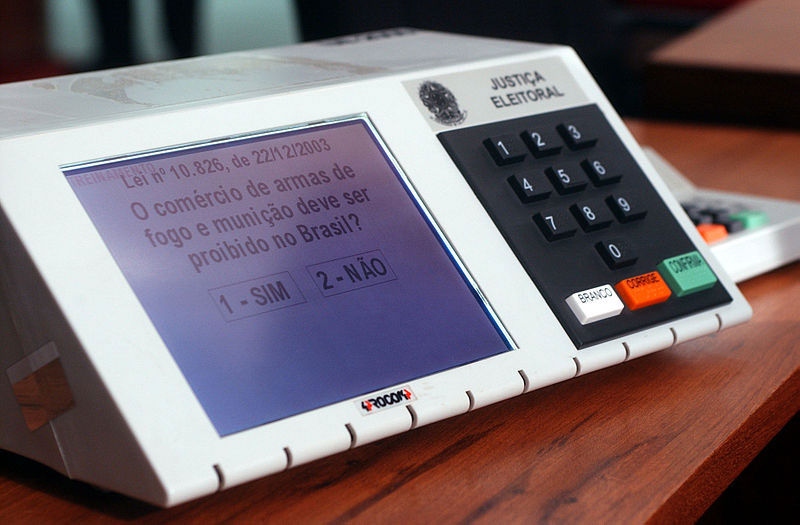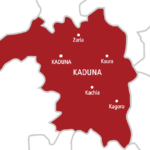In 2018, Kaduna State became the first state in Nigeria to conduct an election using an electronic voting system. It also made Nigeria the second in Africa to achieve the feat.
Come September 4th 2021, Kaduna State Governor, Malam Nasir El-Rufai, has geared up to deploy the same technology with updated software to conduct the local government elections.
- Meet ex-Afghan Minister who is now a food vendor in Germany
- Abducted Niger monarch regains freedom after 10 days in captivity
Here are nine things you need to know about electronic voting and how it works:
What is electronic voting?
Electronic voting or e-voting is the use of electronic machines to aid in voting and counting.
It works with either computer connected to the internet or an Electronic Voting Machine (EVM) that records votes by means of a ballot display.
The EVM is a computerized box-like machine that comes with an attaching ballot box where generated ballots drop in. Each voter will have to approach the machine to cast his/her vote.
The Chairman, Kaduna State Independent Electoral Commission (KADSIECOM), Dr Saratu Binta Dikko-Audu, said the EVM software has been upgraded to increase the credibility of the election process and is “simpler to use than the ordinary analogue phone.”
Is electronic voting legal?
Kaduna State Government in 2018 substituted the Kaduna State Independent Electoral Commission Law No. 10 of 2012 and other Matters Ancillary, with the Kaduna State Independent Electoral Commission Law, 2018 to pave the way for electronic voting in the state.
Section 16 (3) of the state law provides that the State Independent Electoral Commission shall have the power to determine the method by which voters may be verified and accredited for the purpose of casting their votes.
It states that: “Such verification and voting shall be through the use of approved electronic devices, smart card reader and electronic voting machine.”
How the EVM works
While displaying the machine recently, the commission’s boss said the machine first opens the page for the chairmanship election for any voter to select the logo of the party of his/her candidate by just a tap.
The screen then enlarges the logo for the voter to tap the ok or cancel button.
“If you tap the ok button, your vote is captured and on the left side of the screen, the tally for which the logo of the party selected will be generated and the slip drops into the ballot box. The same process is repeated for the councillors vote,” said Dr Audu.
Does the EVM operate with a PVC?
The Permanent Voters Card (PVCs) was not used in Kaduna’s 2018 electronic election but the EVM software has now been upgraded to use PVCs.
The KADSIECOM boss has explained that presiding officers at each polling unit will authorize voters but each voter will vote using his or her own PVCs to open the platform then proceed to select the logos of the parties of their candidates of choice.
What will happen on election day?
The elections for the 23 LG chairmen is scheduled for September 4th, 2021 and residents are expected to go to the polls with their PVCs.
The Presiding Officer at each polling unit will set up the EVM for voting which will be done in front of party agents, security agents, and the electorate present at the polling unit.
Dr Saratu Binta Dikko-Audu said accreditation will be done manually using the voter register.
“The assistant presiding officer will check the voter register and check your voter card then mark you on the voter register and mark your thumb with an indelible ink,” she said.
Fears of multiple voting
There are fears that the EVM could be used for multiple voting as it was the major concern during the 2018 local government election in the state.
However, the State Independent Electoral Commission said the software has been upgraded to increase the credibility of the election process, adding that there will be no room for multiple voting.
The commission’s boss said the indelible ink marked on the hands of voters will deny them access to another polling unit or another machine.
She also said, “Once the electorate has voted, the machine will capture the PVC. It can view the card, it won’t see the chip in the card but it will deny that card access to vote a second time.
“So this time around, we have cancelled multiple voting so whoever thinks he can take the machine and continue to vote over and over again, won’t have that access.”
Chairmanship or councillorship?
If for any reason a voter feels the need to participate in only one category of the election, this is possible according to the chairman of KADSIECOM who said all that is needed is for the voter to press the cancel button twice.
“It will ask if you are sure you don’t want to vote, then you press ok and you cancel the second time and that’s it, the machine shuts down and you can put your PVC as many times as you like, it will not open again until the presiding officer comes and another voter approaches the voting machine.”
How results will be transmitted
The state’s electoral body says an agreement was reached with service providers to boost networks on election day.
However, where unforeseen circumstances force poor networks in some areas, the machine can transmit results to the server as soon as it gets to a network area.
Another alternative, according to KADSIECOM, is to transfer recorded votes from the EVM memory into a flash drive to be transmitted to the server.
Dr Audu explained that the paper tally which drops into the box can also be removed and counted.
Resolving vote contention
The commission’s boss in Kaduna explained that at the end of the election, the presiding officer will print out a summary of activities on the machine which captures all votes to be given to every party agent, security agent, and those who will wait till the end of the election.
By this, she said, each can take a copy of summaries printed out by the presiding officer.
Where there are cases of contention, the EVM can be opened before it leaves the polling unit for the tallys to be sorted out and counted.

 Join Daily Trust WhatsApp Community For Quick Access To News and Happenings Around You.
Join Daily Trust WhatsApp Community For Quick Access To News and Happenings Around You.

